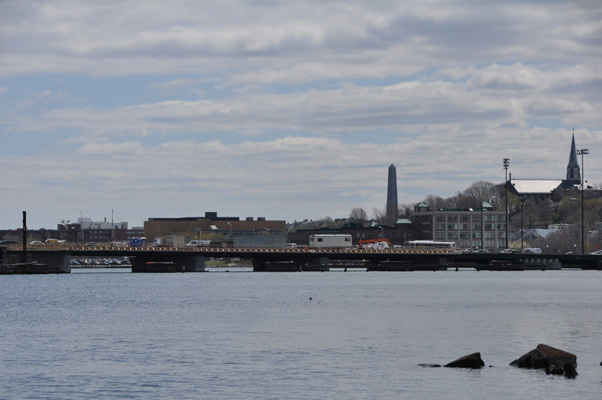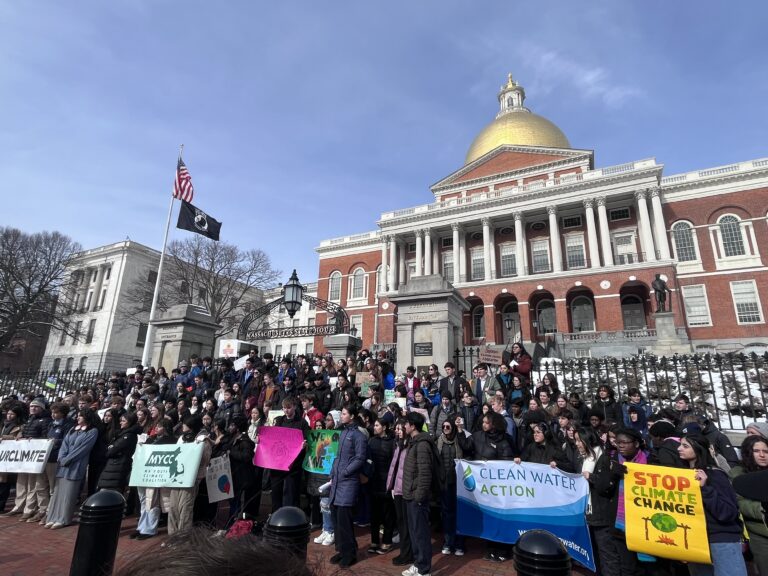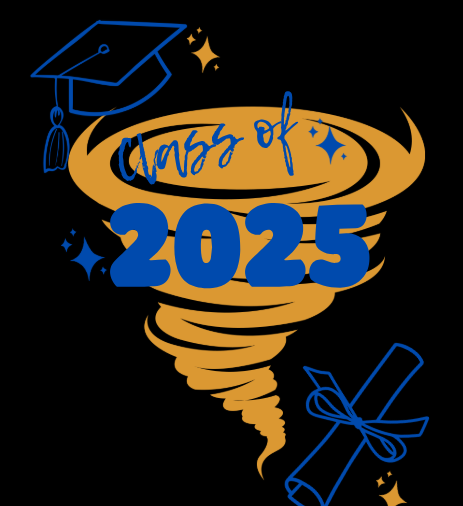
The Alford Street Bridge (also called the Malden Bridge), which carries MA Route 99 across the Mystic River between Charlestown and Everett, Massachusetts. View is from the north (upstream); the Bunker Hill Monument is visible in the background. Photo and caption taken from Wikimedia Commons.
The Mystic River Watershed Association (MyRWA) is a group of people who are skilled and dedicated to working together to clean the rivers in the United States. The MyRWA’s goal is to connect people to the water resource in their community, specifically the Mystic River, and help them realize the importance of this resource.
The local watershed is an area of land that drains to the Mystic River, includes all of Medford and the communities surroundings. When water hits the streets or goes into the ground, it eventually drains into the Mystic River. The water quality is a important thing to pay attention to because the Mystic River is a frequent paddling sight, as well as a nice jogging and hiking destination along the river.
There has also been some pollution in the Water Segments like Mill Creek, which has a compliance rate at 32%, affecting the Mystic River. Mill Creeks has become unclean over the years, and is filled with oil from construction sites around it.
MyRWA focused on cleaning the Mystic River for a long period of time, which now has a compliance rate of 95%, whereas in 2009, the Mystic River was covered in water chestnuts; an invasive species that was clogging the Mystic. Through the efforts of volunteers and support from the MyRWA, the Mystic River is cleaner and has a lot less compliance than before.
In the MyRWA there are different categories where you can help and support the Watershed cleanup: Herring Monitoring, Water ChestNut Removal, Advocacy, Art and etc. The Watershed cleanup is where the MyRWA members and volunteers advocate for unimpaired water quality to be established in the 22 communities. It’s based on the MyRWA Quality Policy Statement, adopted in 2012, that gave the MyRWA certified water quality monitoring programs to reach high goals.
Herring Monitoring is a process to collect data in order to estimate the total herring run size in the Mystic River. The data gathered is shared with the Massachusetts Division of Marine Fisheries to help on passing knowledge across the state, thanks to the Department of Conservation, Medford Boat Club and the monitors.
The Water Chestnut Removal is a project for the MyRWA of these invasive plants clogging the Mystic River in 2009. During the time the municipalities, local environmental organizations, boat clubs, corporations, community members to pull all the water chestnut in the MyR to obtain funding for mechanical harvesters.
The water chestnuts still grow ferociously every year, so this project involves many volunteers that help the MyRWA to collect the water chestnuts. In 2015, 966 volunteers hand-pulled 4,280 baskets of water chestnuts during summer. The MyRWA strives to get gain more volunteers, and are always looking for more help.

Including MyRWA Art Gallery at Medford Arts Center who is seeking the artists of various media productions regarding the environment of the Mystic River. In the MyRWA there are more activities. All of these categories must be concerted and coordinated with actions from residents, municipalities, regulators and legislators.
On October 19th, the MyRWA held a meeting for the members, volunteers, and people who want more information about the association. Jessica Norway, who moved to Medford a month and half ago, went to the her first meeting in September, and again in October.
She considered volunteering and recommends people to come and help out for the association. Norway studies water management at Tufts University. “Get to know your local watershed [as it eventually] comes out of your faucet, [so you can] know where your water is coming from.”
With the little information Norway knows about the MyRWA meeting as her first experience, she stated that “the first meeting was awesome, because they did a storm water infrastructure and planning kind of workshop. I learned a lot and thought everyone is really friendly and informative who want to educate of what’s going on the community to make a firm decision. I’m excited.”
Russ Cohen, a retired environmental state fishing department member in the Mystic River Watershed Association since 1976, still supports the MyRWA staff. To those who would like to join the MyRWA, but do not know what to do, Cohen explained that when someone comes to work with the MyRWA, “[They] need to decide whether you want to be outside or inside.” They offer many different types of jobs, such as desk jobs, being out in the field, working at a laboratory.
Debbi Edelstein, a board member of the MyRWA who works in the environment field as director conservation non-profit who worked in watersheds and rivers. Edelstein like people to know the MyRWA is a great organization. Edelstein expressed that, “Whatever you live, you can get involved with your local watershed communities. There are all kinds of outreach projects and awareness building to let people know.”
She explained that people need to refrain from dumping waste into storms drains because, “the filth goes to the rivers to cause a bad aquatic life. [She] wants young people to care about the environment and get involved in any way that interest them rather it’s animals, land, sea,etc.” Edelstein also feels that, “The planet needs our help.”
Michael Fager, a board director, vice president member in the MyRWA stated, “During the winter is bird watching, of a bald eagle. If you go between the dam of the upper and lower of the Mystic Lake in Medford. First of January when the lake starts to freeze, the bald eagles show up because below the dam is always a open water where the eagles hunt for ducks and fishes. Spring is where the MyRWA host a row race and canoe race in May to be in the race or volunteer. In Fall, to watch the changes of the river through Summer to Fall. Lastly the summer where people participate in the water chestnut project.”
There is more information on the MyRWA on their website, and more options to learn more about the MyRWA watershed, projects, programs, events, history, and what the citizens can do to make a better environment can be found under the “make a difference” tab.




